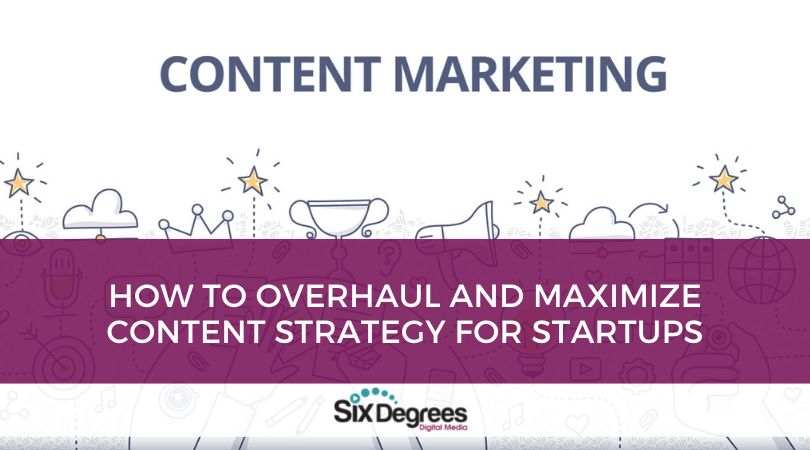Picture yourself standing in the office of the auto body garage talking shop with a mechanic about what’s wrong with your vehicle… and it’s almost as if they’re speaking in tongues. You have no idea what they mean, what a carburetor is, why you need one, and why it’s going to cost so much money.
Flip that around and imagine that the same auto body mechanic switched his language and actions to suit your needs, preferences, and current level of understanding of what’s needed to solve your car troubles – not in a condescending way, but in a way that just made things click.
You’d be more apt to fork over your hard-earned cash to someone who understands you, respects you, and ultimately speaks the same language.
That’s your brand voice.
What is a Brand Voice?
In the simplest way, a brand voice is the personality of your business conveyed through every post, blog, podcast, video, and advertisement. It’s consistent across every platform, in every interaction, and humanizes your company.
It’s the culmination of your company mission, vision, promise, and values all wrapped up in the communication comfort that your target audience yearns for, reacts to, and most importantly… connects with.
Why You Need a Brand Voice
Ok, ok… got it. A brand voice gives your ideal customer something to connect with, but how does a brand voice benefit your bottom line? – which is… you know, super important for companies to stay in business. There are loads of benefits to developing a brand voice, but let’s chat about a few with the greatest impact.
Differentiation and Recognition
You’ve seen it. Two companies who seem so similar, have such generic messaging and you have a hard time finding the distinction between them. They could be local pizza places that serve exactly the same food but you could not for the life of you remember which one has the cannolis you like. (Psst… they probably both have the same exact ones.)
Now… imagine one of those mom-and-pop pizza places is very active on social media and uses witty puns to offer some engagement opportunities to those who follow their Twitter and Facebook accounts. They create behind-the-scenes video posts on Tiktok that shows how much fun they have crafting the perfect pizza for your family game night. They greet you by name every time you walk through the door to pick up the pies and you instantly become one of the family.
Kind of hard to forget that cannoli now, huh? Their brand voice screams personalization, fun, and family.
Brand differentiation is crucial to reach and capture the attention of your target audience. It separates you from your competition and when you deliver similar products or services, your brand voice pops into the minds of potential and current customers long before they consider any other establishment or company.
Mastering your brand voice offers both of those benefits – recognizability, and differentiation from others within the same service area or even industry.
Focused Framework
When you have done the work to create an awesome brand voice, content and ad creation become a bit easier. No longer will you have to think about how to structure the wording but it flows a bit better because you’re focused on relaying information about your products and services through that brand voice framework.
It offers a predictable structure for your marketing teams to create consistent content with compatible messaging so you can stay on point and on brand.
Increased Sales and Loyalty
Customers connect on an emotional level with the way you “speak” to them and the words in which you do it. Nike’s “Just Do It” message resonates with those who want to get more active whether that be through various sports or just going for a walk.
It encourages them to follow their dreams no matter what they are. It urges motivation and support with just those three little words and every ad, message, and piece of content that Nike puts out there offers up the same brand voice.
When clients think about starting a new exercise regimen, they think of gear. Nike will be there to motivate them with its sneakers, apparel, and brand voice. Once those customers see some personal success, they may credit both themselves and the company – upping their brand loyalty… and creating an “obsession” with their brand.
And… Bingo – sales.
3 Steps to Create Your Brand Voice
Now you’re sold on what it is and why you must have one… let’s figure out how to actually get your brand voice from just an idea and a promise… to an actual configuration for messaging across all your social media, digital, audio, and print mediums.
Step 1: Embark on a Fact-Finding Expedition
How on earth do you expect to speak to, resonate with, and connect to your target audience if you don’t understand who they are and what they need? It’s time for some in-depth research.
Imagine the perfect buyer for your product or service.
What do they look like?
What do they do in their spare time?
How old are they?
What are their preferences?
Where do they live?
Research their demographics (or firmographics for companies to sell to other organizations) and their psychographics. Capture as much data about your ideal customer as possible so you can create a customer avatar – an imaginary representation of your ideal client.
Step 2: Analyze the Answers
With that spreadsheet of information about your ideal customer… analyze the answers. Segment them into cohorts of potential customers on paper and dig into what your buyer is all about. Envision what that person looks like in your head and give them a name. Humanize your customer because they’re not just a number on a computer somewhere.
When you humanize your customer, you begin to formulate your voice to speak directly to them – and in return, they humanize your company. They connect with your brand voice, you develop a relationship with them, and they’re more apt to use your services or buy your product.
Step 3: Transform it into Meaningful Messaging
When creating content or speaking to this customer using your brand voice, imagine how they would respond, and if that’s a success… you’ve got your brand voice.
Example time. If your catalog includes products for seniors, your brand voice wouldn’t use modern language and slang that commonly comes out of the mouths of teenagers, but would possibly offer a feeling of independence and well-being using language that connects their desires with your offerings.
It must mean something to your audience. Canned corporate voices just won’t cut it and without a brand voice, you’ll find yourself competing harder (and possibly failing) with those who have one.
Conclusion
Oftentimes, business owners have no clue where to start with creating an engaging brand voice that does more than just tell people what you’ve got on your website that they can pay money for. Consulting with a marketing and branding expert on the perfect strategy is a smart time investment into the future of your company’s marketing campaigns (and budget). Work smarter… and with a memorable and influential brand voice.






